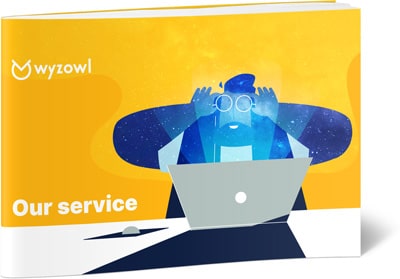Last updated on 10th January 2024
What will make you more successful in the world of mobile apps?
a) An amazing app that adds immense value to people’s lives
b) A world-class marketing plan
If you picked “A” (and if you’re an app developer you probably did), you’re wrong.
It doesn’t matter what you’re selling or what you have to offer, if your marketing efforts aren’t up to scratch.
And here’s a little story to prove it…
We all need toothpaste. We use toothpaste every day. In fact, you could go as far as saying that toothpaste is a necessity.
But it only became a necessity when a marketer by the name of Claude C. Hopkins was tasked with selling a new creation – a minty, frothy paste – called Pepsodent.

Thanks to Hopkins’ ad campaigns in the early 1900s, toothbrushing became a daily habit. Three weeks after the first Pepsodent ad, demand for the product exploded so much that the company couldn’t keep up with orders.
Within a decade, Pepsodent was one of the top sellers around the globe – and now, of course, brushing twice daily is considered very much “the norm”.
So, with the importance and power of marketing in mind, we’re going to show you how to build a world-class app marketing plan for 2024.
Note: we’re going to be focusing on one app for this article: Duolingo. This is in no way sponsored content or an advertisement for Duolingo, we simply wanted to select one app to show just how vital each of these steps are, and how they all come together to build a world class marketing plan – call it a “case study”, if you will!
1. Embody your users
First thing’s first, you can’t sell to your users unless you know them – inside and out. Not just who they are, but what they like, what they hate, and how they like to spend their time.
To find out more about your ideal users, you can conduct online surveys targeted towards consumer behaviour.
Tools like SurveyMonkey can give you access to a pool of respondents from all different backgrounds that will help you find out more about your ideal users.
It’s free to try, and in seconds (using their ‘build it for me’ template) you can roll out a survey to your target market:
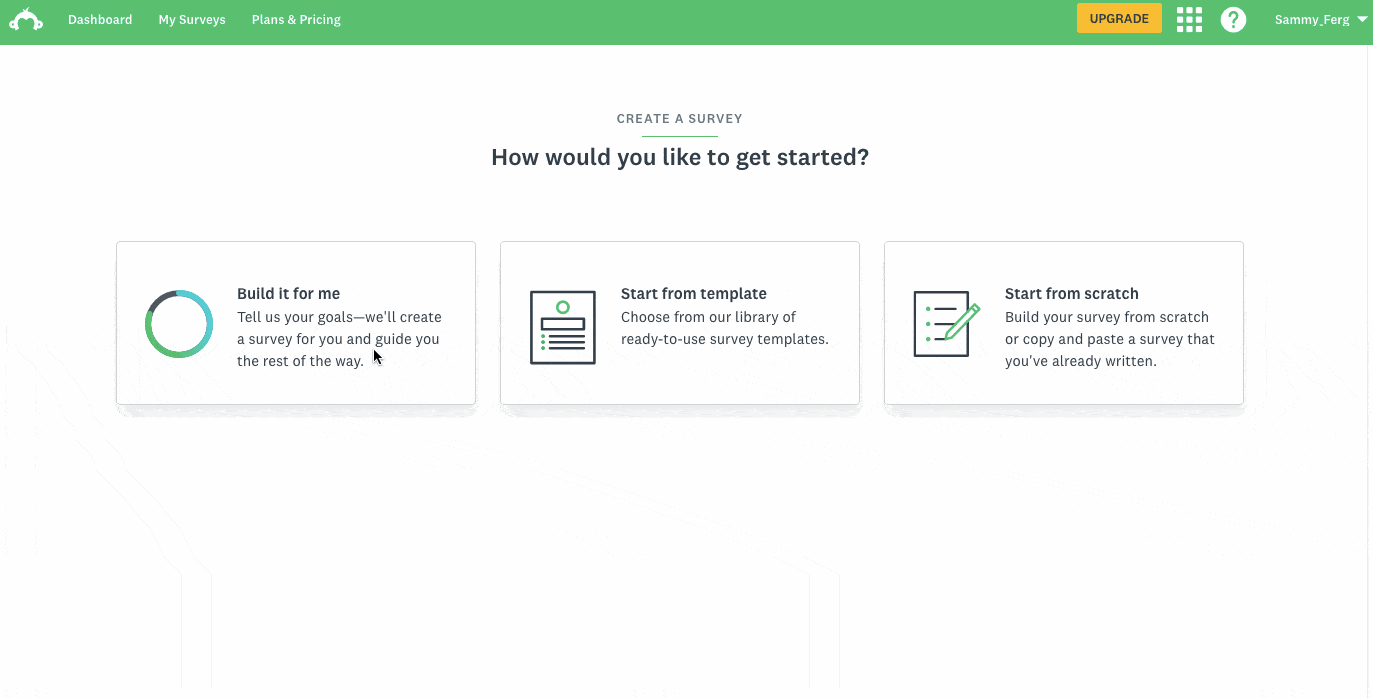
However there is a charge for collecting targeted responses, starting at £0.99 per response.
Alongside collecting this real-world data, you can also work on creating fictional user personas. These are characters that represent your ideal customer, and help you to understand them better when it comes to marketing your app.
The more “fleshed out” you can make these buyer personas, the better. We’ve created a free eBook on the topic that also includes a template to help you get started: Create buyer personas that work!
Once you’ve found out everything there is to know about your ideal users, it’s time to use that information to create world-class marketing materials for your app.
Let’s take a look at this video for the app, Duolingo:
Duolingo is an interesting app to study when it comes to marketing to ideal users because they have a varied target market – as reflected in the video.
We see 3 very different characters, all in different situations – giving viewers more chances to find someone they identify with.
In addition to this, the messaging of the video is centred around “getting more out of your day”. All of the characters have a bad experience – from dropping the groceries, to accidentally shaving off half of their mustache, to… being eaten by a fish – but the Duolingo bird shows up to offer assistance, along with the voiceover that says “if you did your Duolingo lesson, you’re making every day count.”
This type of phrasing is exactly what would resonate with the type of person likely to download Duolingo, someone who wants to spend time each day improving themselves by learning an additional language.
We can also learn from the branding in this video. It’s important that your branding appeals to your users too – consider what type of colours and graphics they would like.
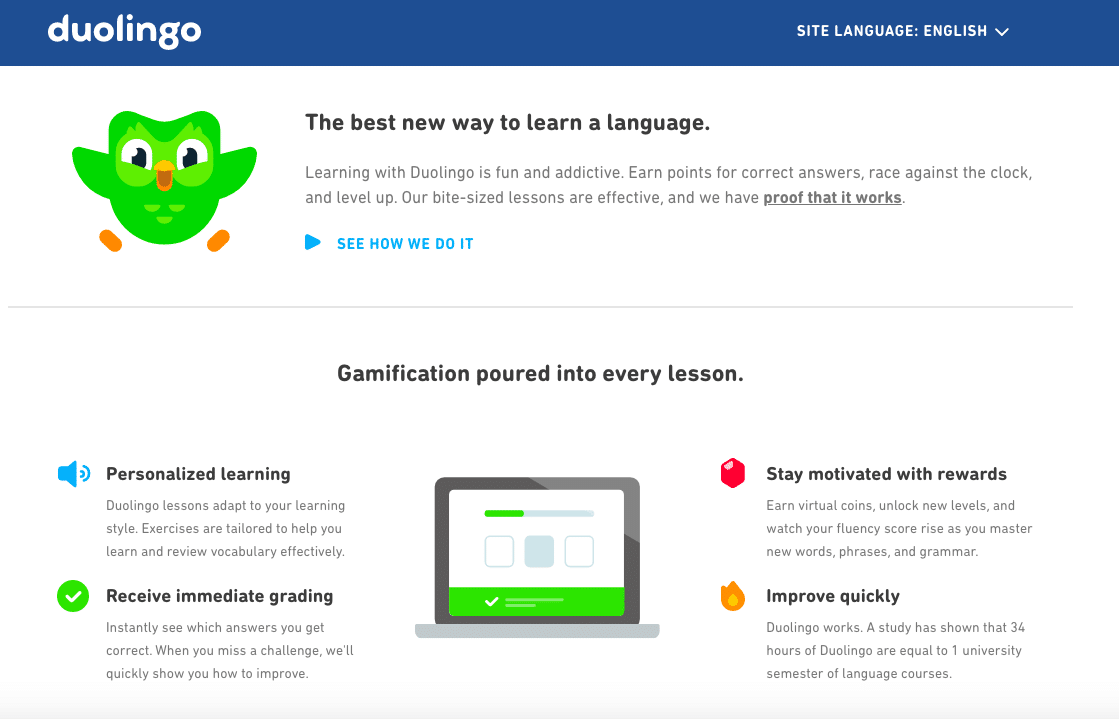
Duolingo’s style is very colourful and cutesy, which works quite well for their market of gamified language learning. And sets them apart from their more straight-forward competitor, Rosetta Stone.
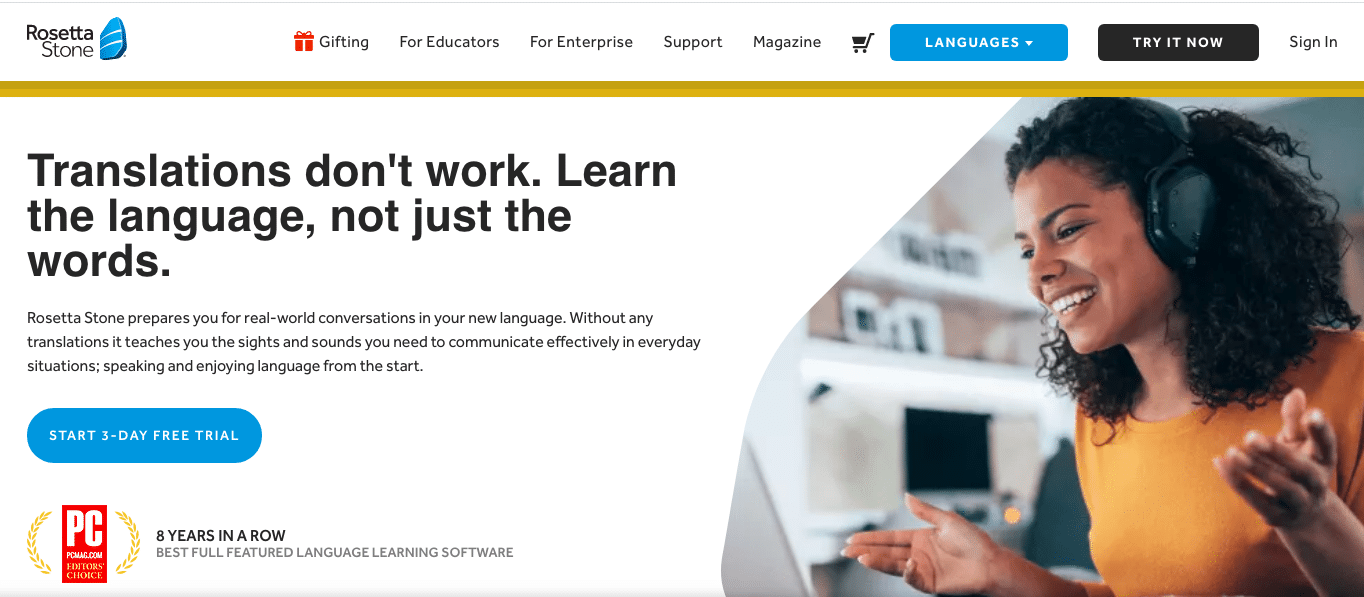
2. Build an online presence
After learning all about your target users, the next step is to find them online. In order for people to find your app, you need to build an online presence everywhere, not just on the app store.
Of course, your presence in the Apple app store and Google Play is still very important! And you should optimise your listing as much as possible in order to make it more visible to your ideal users.
App store optimisation is very similar to search engine optimisation. You need to optimise your title and description with keywords, and upload high quality images. An App Preview video can also really boost your app store listing.
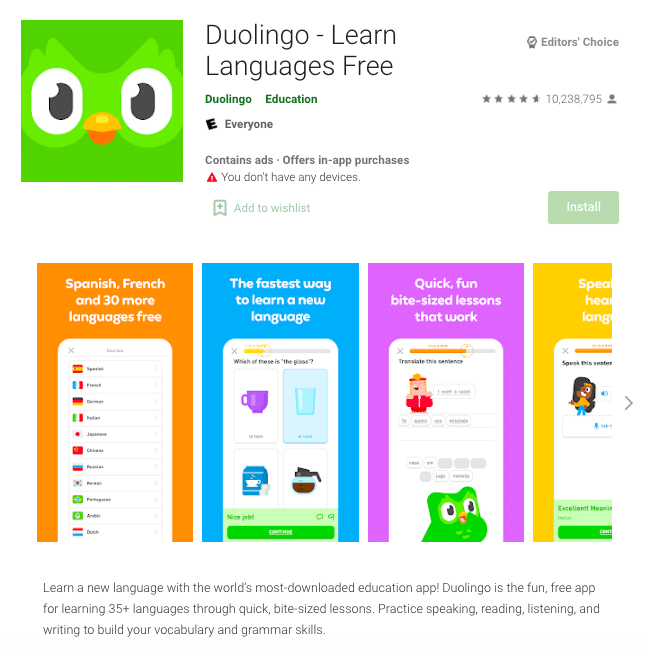
So, where else should you appear online?
Well…everywhere. Think about where your customers are going to be – for example, on social media – and start to build your presence there.
According to our social media study, 89% of mobile app users are using social media apps.
But this isn’t the place to sell to your users, this is the place to be social with them. Post interesting facts, funny videos, and take an interest in current events. Here’s a recent example from Duolingo’s Instagram page:
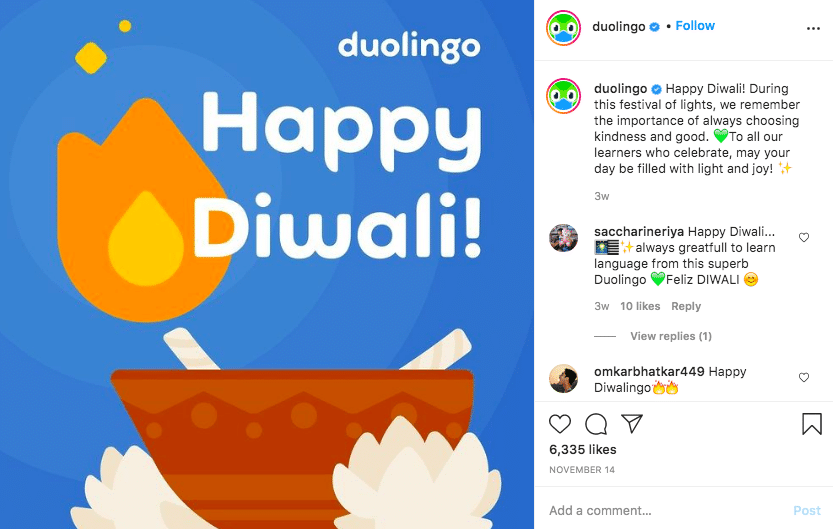
You should also try to keep in touch with users via email marketing. Email marketing is a great tool for encouraging users to upgrade or to spend more time using your app:
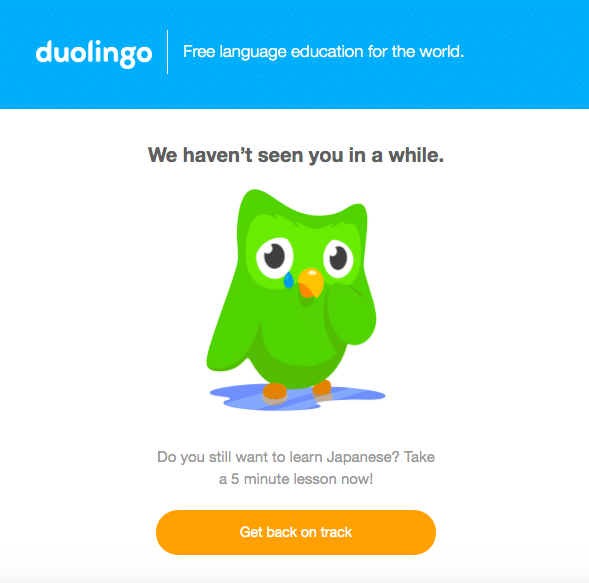
According to a recent study by Hubspot, 78% of marketers have seen an increase in email engagement over the past 12 months.
3. Utilise video
Consumers are calling out for more video content right now. According to our state of video marketing survey, 86% of people would like to see more video from brands.
In addition to that, 74% of people say they’ve been convinced to buy or download a piece of software or app by watching a video.
So there’s no denying the power of this marketing tool. Sticking with Duolingo as our example, let’s take a look at some videos they’ve used to market their app:
A short ad of 30 seconds or less is a must for marketing success. They can be used on YouTube – or anywhere online – as part of a PPC campaign, and they’re also great for grabbing attention on social media.
Speaking of social media, fun videos like this one can go a long way:
As previously mentioned, social media isn’t the ideal place to be salesy. It’s a place to show off your brand personality and build a deeper connection with current and potential users.
This April Fool’s day video was a great way for Duolingo to do that. The cute mascot of Duolingo has been the target of many internet memes and this was a way for the company to join in on the fun and get people talking about their app.
You can also utilise video by creating testimonials or user case studies, like this one:
An in-depth look at how your app has been successful for one of your current users is a great way to win over any potential customers that are struggling to decide whether to choose you over a competitor.
4. Learn from your competitors
If you’ve ever wanted to be an internet sleuth, now’s your chance. Finding out everything you possibly can about your competitors can be very useful when it comes to building the marketing plan for your app.
A good place to start is by downloading the apps in your category of the app store. For Duolingo, their closest competitors would be Rosetta Stone and Babbel.
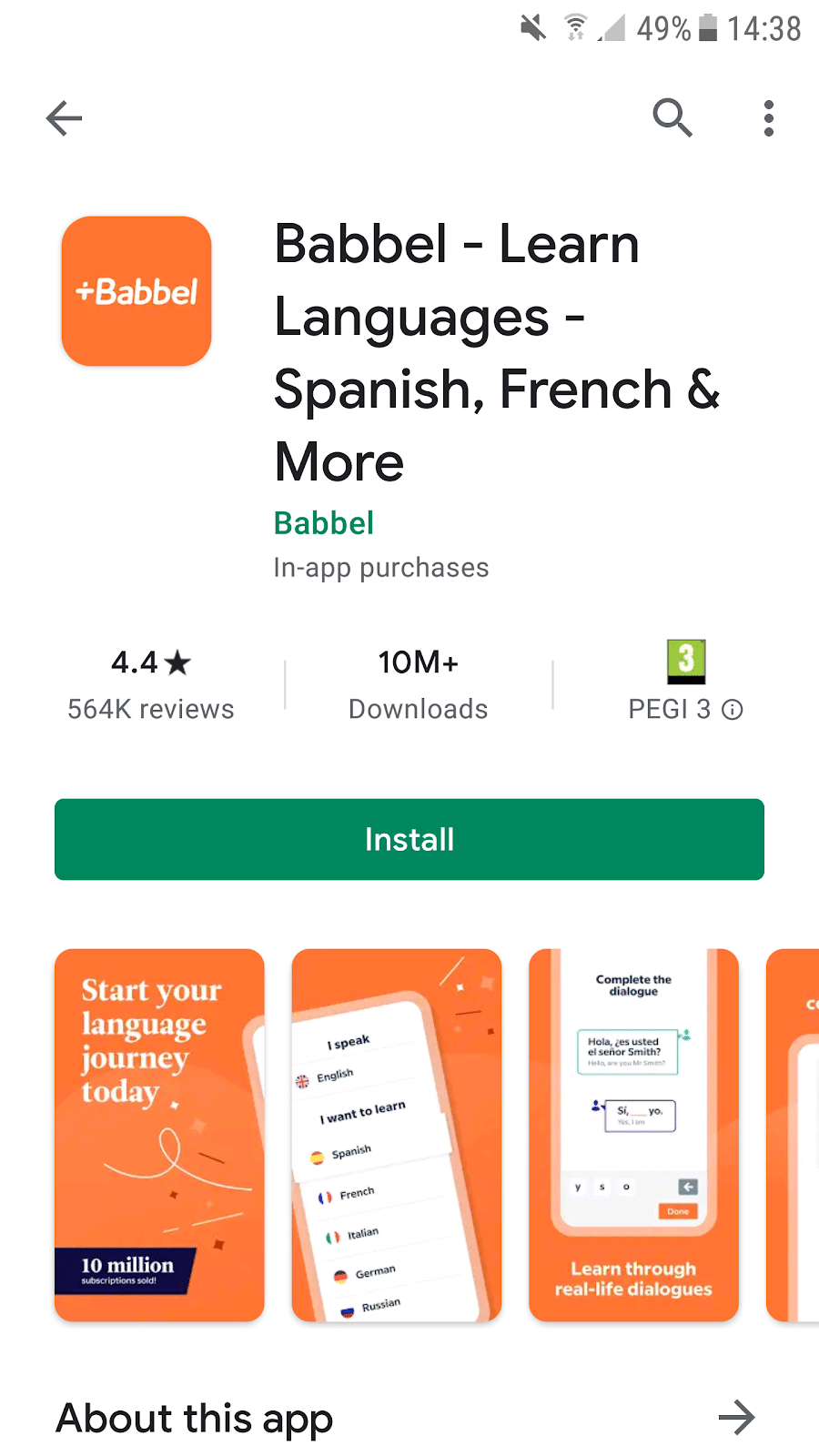
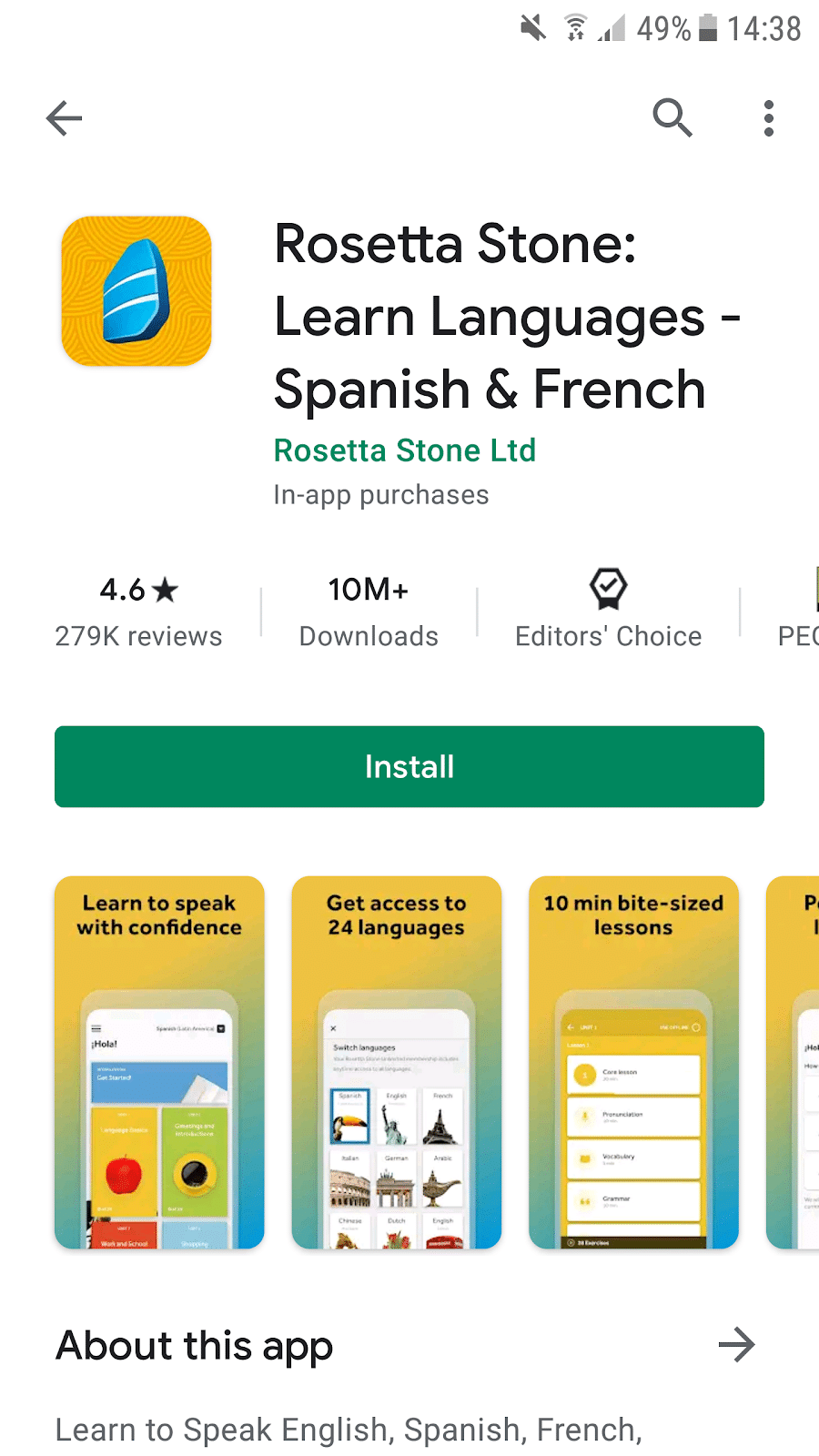
By downloading the apps and using them you can find out what they are like. What they do well, and what they don’t.
It also helps to read user reviews, both on the app store and elsewhere.
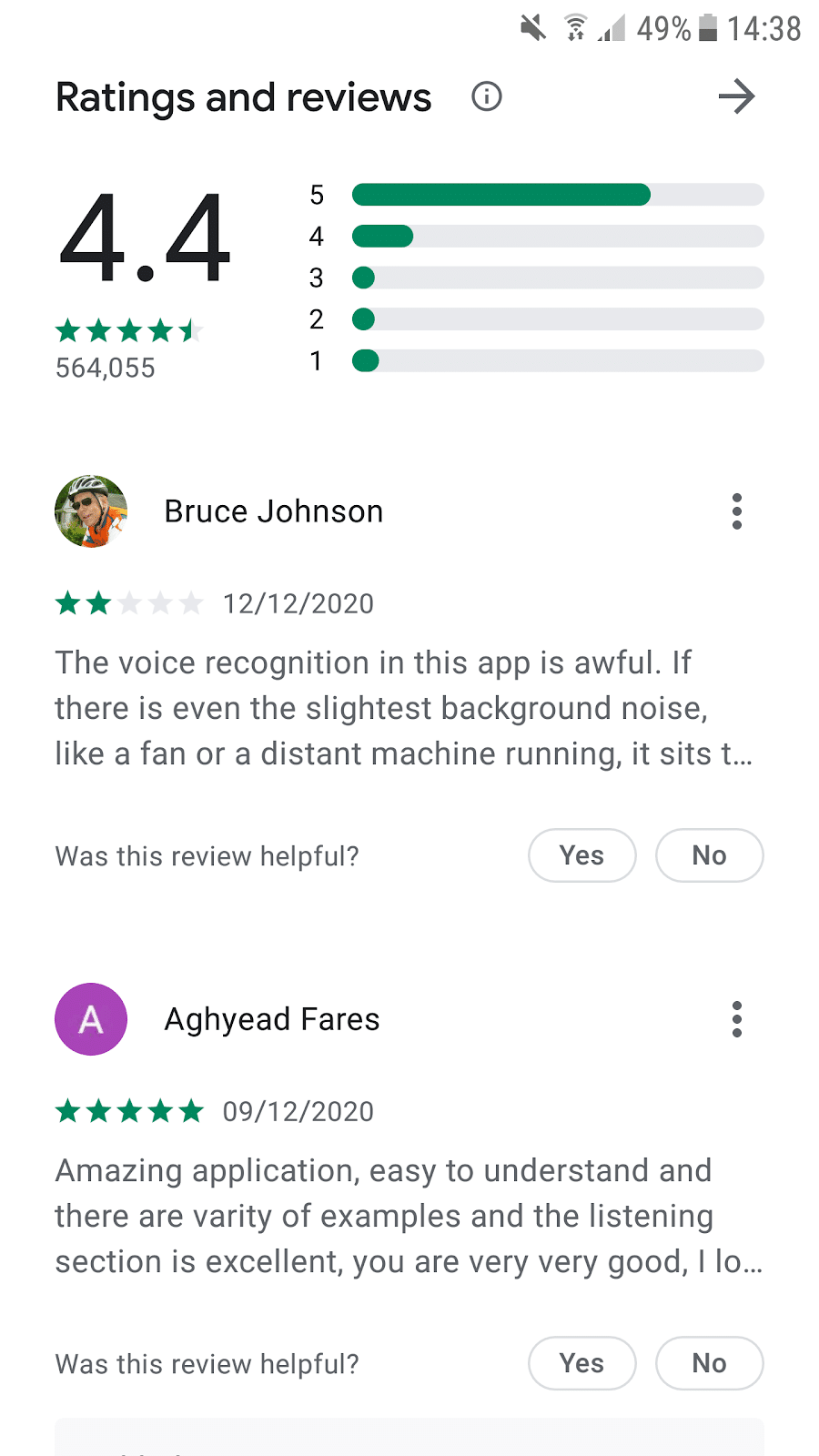
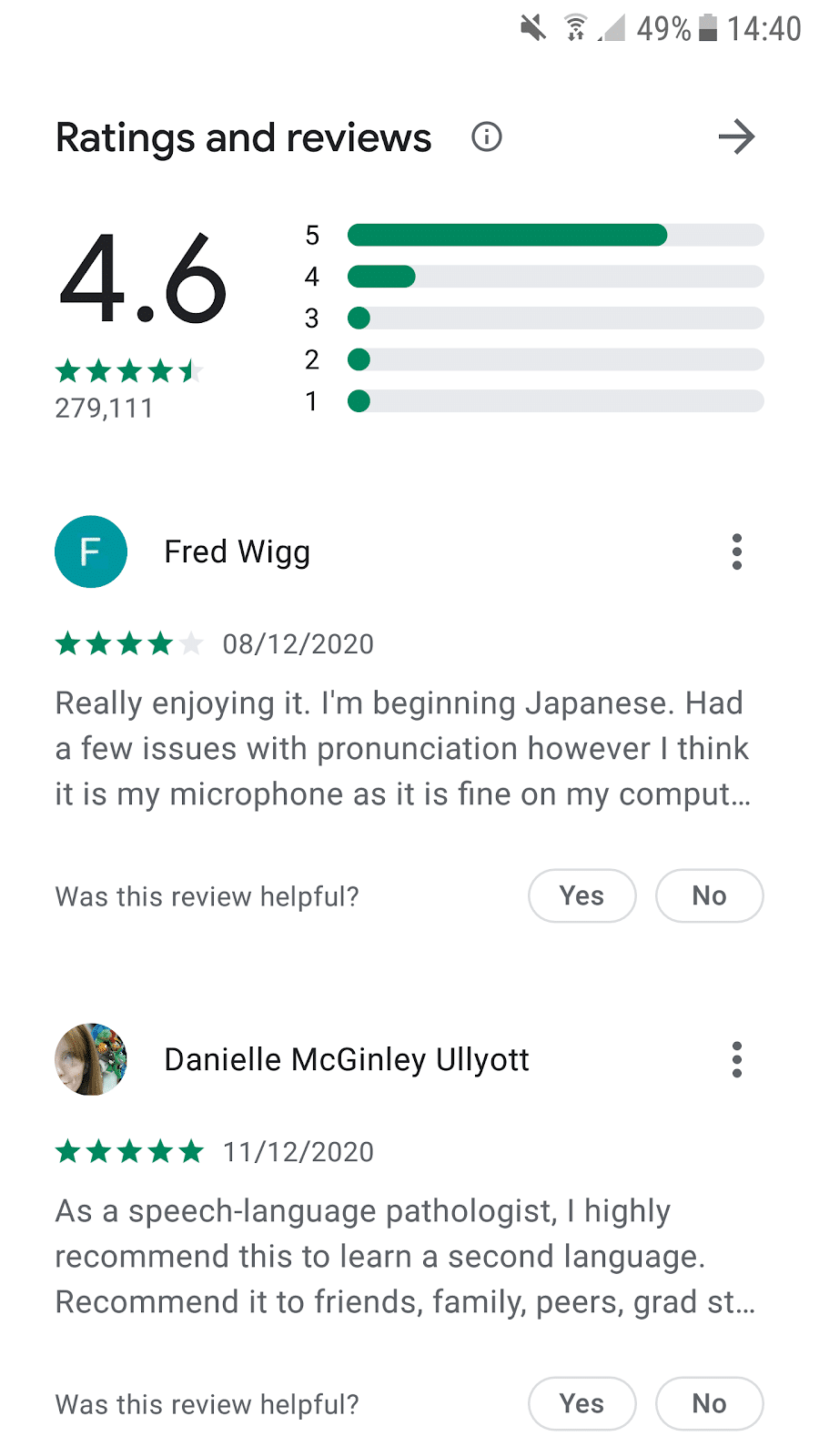
If there is a common complaint that users have about one of your competitors and this is something your app does very well, perhaps you could make this feature a unique selling point that you mention often in your marketing materials.
5. Monetise your app
You may remember an app that was popular a couple of years ago called Vine. Vine was huge in 2013, people loved using the video-sharing app to record and watch 6-second video clips.
But now Vine is forever doomed to the big app store in the sky.
Why?
It was never monetised, and by the time the founders started to think about monetisation it was too late. Newer, more popular apps were on the scene.
This tale of an app that died because of a lack of cash flow is all too common, so it’s important to think of a way to monetise your app.
Fortunately, there are a couple of different ways to do this. If you want your app to be completely free, then you look at ads as a way to monetise your app.
A lot of apps are free but require users to sit through ads every now and then. The free version of Duolingo is an example of an app that does this:
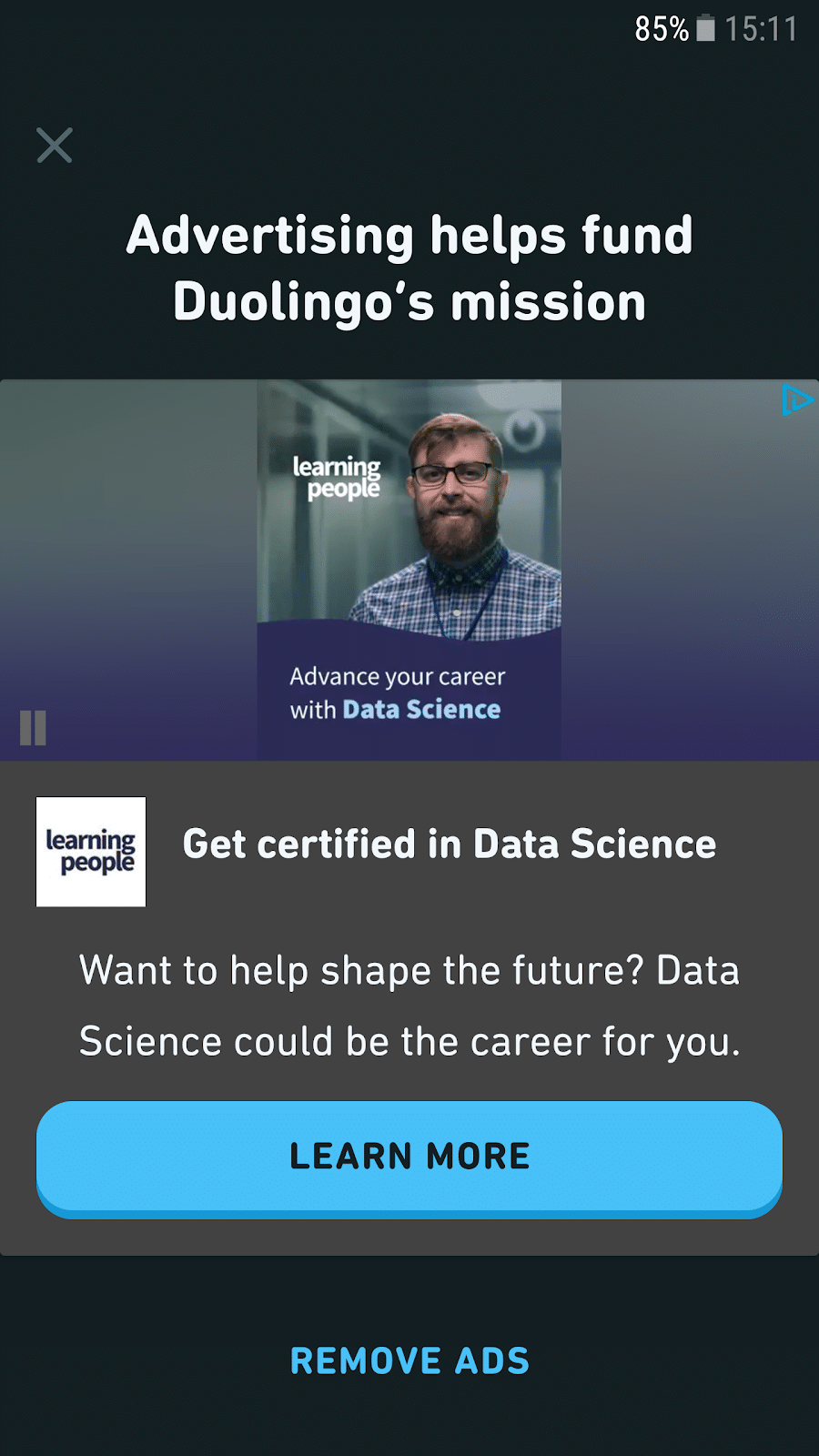
However, Duolingo also has a premium version – users can pay to remove ads, and receive a couple of other perks – which is another popular model for monetising an app.
Creating a freemium service like this is a great way to build your user base while also focusing on monetisation and growth.
Currently, only 1.75% of Duolingo’s users pay for the premium version, but because their user base is so huge this resulted in $36 million in revenue last year.
6. Focus on onboarding
Marketing is the best way to drum up attention and drive new users to your app, but when they get there you need them to see the value in it. Otherwise, they won’t stick around.
All new users to your app should be greeted with a thorough and engaging onboarding process that will help them to not only understand how to use the app, but how to get the most out of it.
When new users download Duolingo they are greeted with this short but sweet onboarding flow:
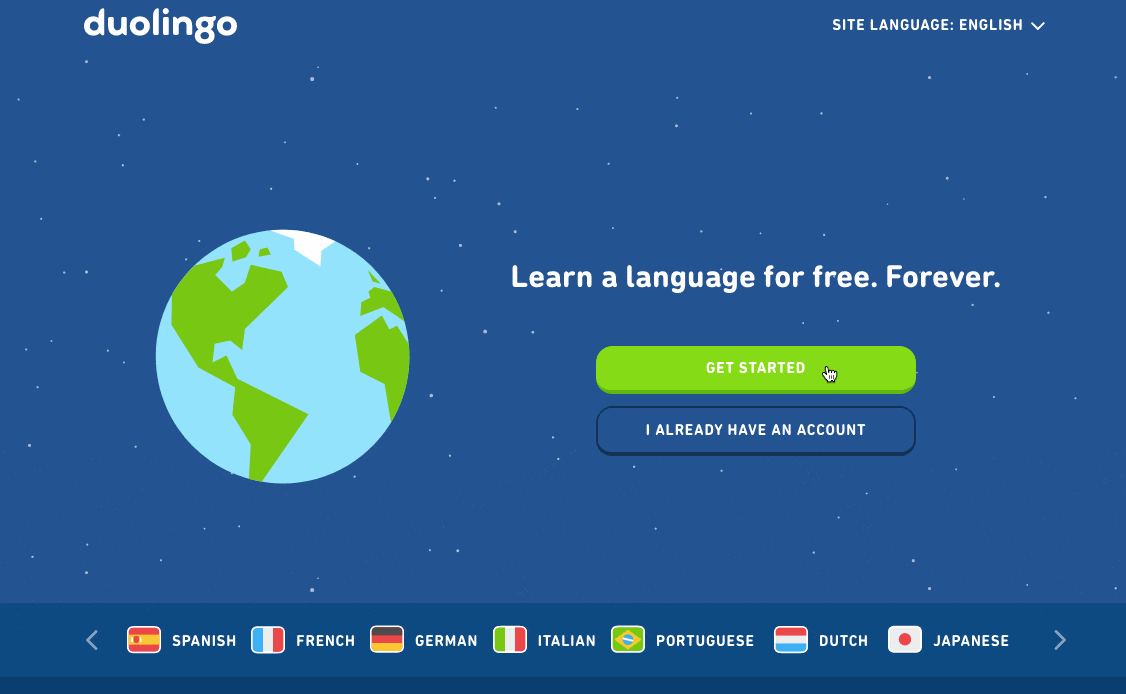
The app asks users some questions that will help them to create a personalised experience. No unnecessary questions are asked, such as an endless list of personal details. In fact, users aren’t required to hand over any personal information until they’re ready. They can simply click ‘Not Now’:
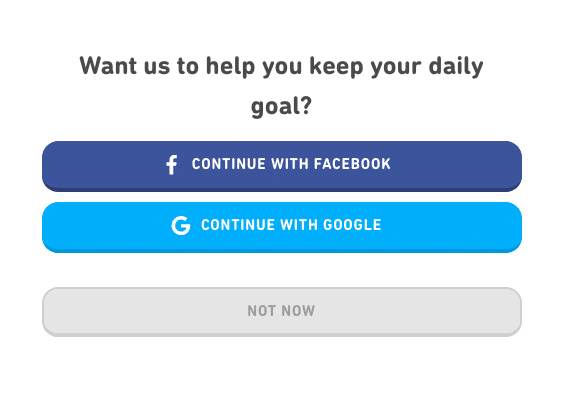
It’s important to consider the user experience when creating an onboarding flow. Think about what your users need to know about the app, now what you want to know about them.
According to our customer onboarding survey, 86% of people say they’d be more likely to stay loyal to a business that invests in onboarding content that welcomes them and educates them.
7. Focus on retention
Thinking ahead to when you’ve unleashed your app to the world and attracted users in their droves thanks to your world-class marketing plan, retention will be important.
In order for your app to stay relevant (in other words, stay alive!) you need people to keep using it on a consistent basis.
Push notifications can help to encourage users to come back to your app on a regular basis, and they’re not as annoying as you might think!
It seems app users quite like push notifications. According to research by Invespcro, push notifications boost app engagement by 88%.
In addition to keeping your current users happy and engaged, you can also rely on them to spread the word about how much they love your app.
A referral program is a great way to reward your most loyal customers, while also gaining new ones.
Here’s an example from Duolingo:
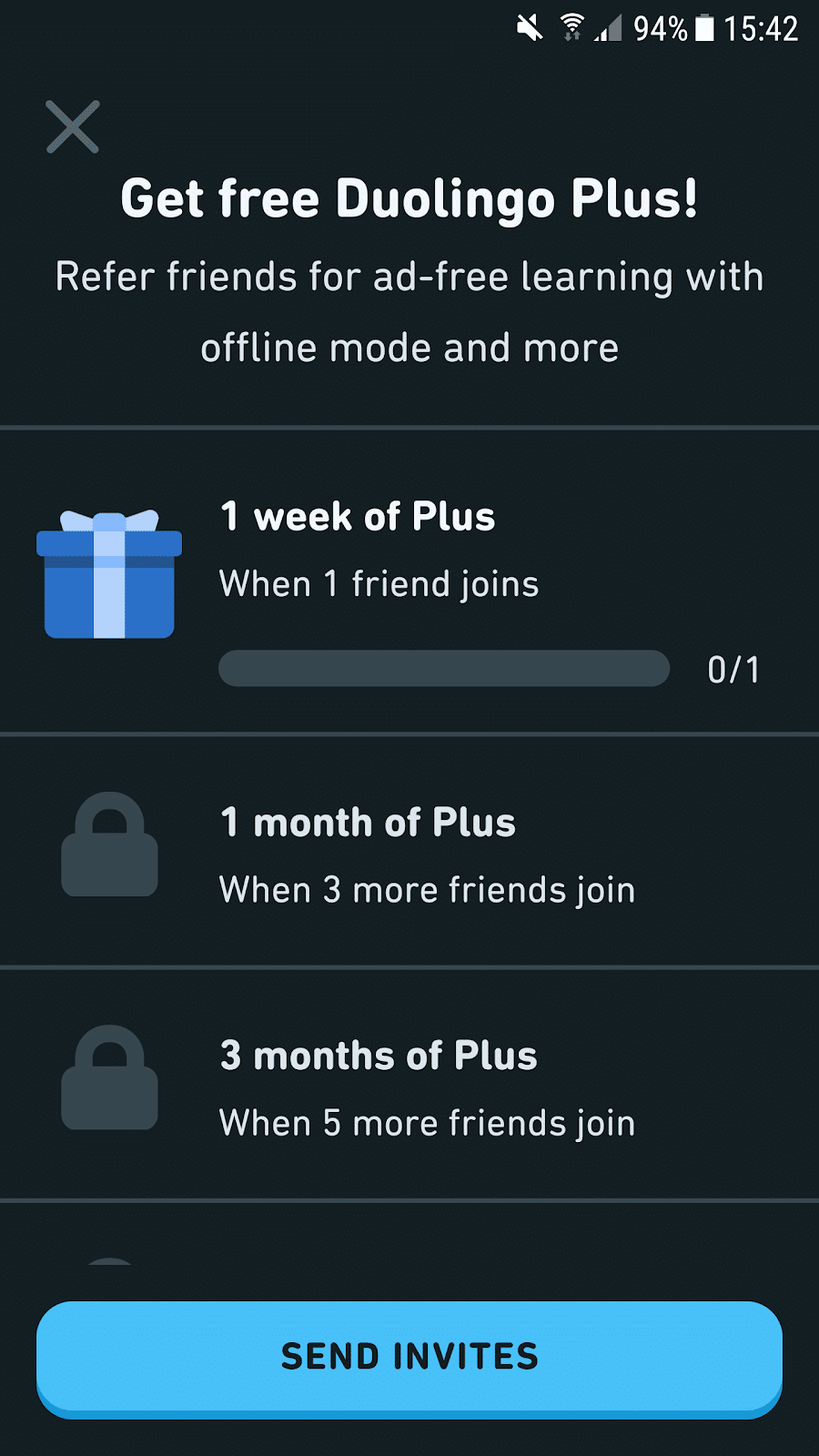
Duolingo’s referral program fits in well with the gamified experience that users expect from the app. The more friends users refer, the more rewards they get!
Final thoughts
After all the time, care, love, and money you’ve poured into creating your app, don’t let it drown in the app store listings.
You need to constantly work to get your app in front of the right people and with a world-class app marketing plan like this one, you should have a fighting chance!
Feeling a bit overwhelmed and not sure where to start?
Try starting with an app demo video that can increase awareness and educate your audience.







